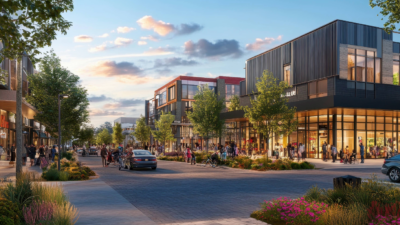The 2021 consumer is different. How they act, what they value and where they want their money to go is not the same as it was pre-pandemic. Over the past year, their perspective has shifted and new trends in consumer behavior are emerging.
For healthcare organizations, understanding today’s patient as a consumer can help improve satisfaction scores, organizational perception and even care outcomes.
Achieving more Personalized Care
The Health Care Consumer Response to COVID-19 survey reports that patients in 2021 (and beyond) desire more autonomy in their care. They value their individuality and want to take control of their health. This includes everything from accessing personal health information, to using wearable health devices, to expressing their preferences for hospitals themselves.
Being able to access medical information quickly and easily in one location is paramount for consumers that have become conditioned to digitalization. Health systems that are investing in new technology and applying advanced analytics to enhance interoperability will attract patients who want the data at their fingertips.
Additionally, new research from the Journal of Patient Experience concludes that the hospital environment influences how patients perceive their care. Participants reported a lack of control and self-advocacy during hospitalizations, negatively impacting their patient experience. Facilities with double occupancy rooms also scored low, as patients felt a lack of privacy.
Ultimately, many patients desire “hospital care providers to honor their preferences regarding autonomy”. Personalized care models will continue to grow among patients as they seek control over their health decisions, particularly after a year when many felt isolated from the decisions being made regarding their health.
Finding Ways to Improve Efficiency
Everyone has experienced the frustration of trying to book a medical appointment – waiting weeks for a short face-to-face meeting with a physician. Today, patients recognize how valuable their time is and seek providers who offer convenience and expediency. In fact, a recent survey showed more than 30% of respondents were willing to pay more in order to get appointments booked faster.
One example of how providers are catering to this patient-centered demand is the adoption of precision scheduling systems, and this practice minimizes wasted time. In the case of one West Coast health system, it was able to open-up 5,000 new exam slots annually, allowing patients to schedule appointments sooner.
If patients can’t access their provider on a timely basis, they’ll likely go elsewhere.
Transparency is a Necessity
Whether patients are price-shopping or advocating for a loved-one, providing clear and open communication is something today’s consumers are seeking more than ever.
According to a recent study by Deloitte, patients say “it’s paramount that clinicians take time to listen, show they care and communicate clearly”. And after more than a year at home, patients have made it clear they value strong relationships with their physicians and want to connect with them in-person: 66% of patients believe that a doctor or nurse needs to physically examine them to fully understand their health needs.
When it comes to costs, consumers want to know up-front what their out-of-pocket will be. In a 2020 survey, respondents were asked to rank the importance of nine statements. The highest ranked statement was “My out-of-pocket costs are affordable”. Surprisingly, this outranked “My health improves”. Offering cost transparency and providing clear communication are critically important to both current and prospective patients.
As healthcare spending continues to increase (projected to reach $6.2 trillion by 2028), payors and providers are competing for consumer dollars more than ever. Patients are front and center, allowing them to be much more proactive in managing their health – demanding quality, value-based care models that are more personalized, efficient and transparent.

 Shawn Janus
Shawn Janus

 Malcolm Randolph Jr.
Malcolm Randolph Jr.
 Brian Bruggeman
Brian Bruggeman